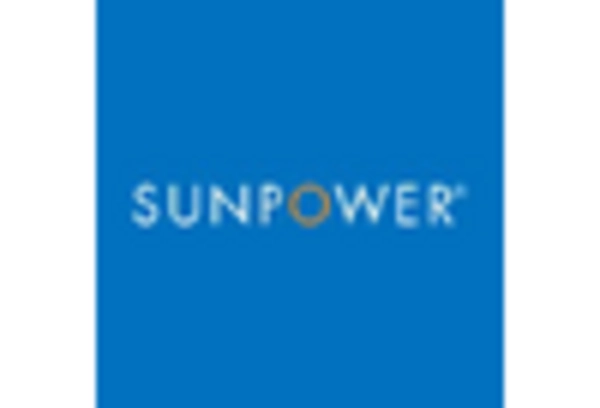Urbanization and Housing Demand
Urbanization continues to be a significant driver for the e house market, as more individuals and families migrate to urban areas in search of employment and lifestyle opportunities. This trend has led to an increased demand for housing in metropolitan regions, where space is often limited. As a result, developers are focusing on creating compact, technologically advanced homes that cater to the needs of urban dwellers. Recent data indicates that urban areas are projected to see a housing demand increase of approximately 15% over the next five years. This shift in housing preferences is likely to influence the design and features of homes in the e house market, emphasizing the need for innovative solutions to accommodate growing populations.
Increased Focus on Energy Efficiency
Energy efficiency is a critical driver in the e house market, as consumers and builders alike prioritize sustainable living. The US government has implemented various incentives to encourage energy-efficient home designs, such as tax credits and rebates for energy-saving appliances. Recent statistics suggest that homes designed with energy efficiency in mind can reduce utility costs by up to 20%. This focus on sustainability not only appeals to environmentally conscious buyers but also aligns with regulatory trends aimed at reducing carbon footprints. Consequently, the e house market is likely to see a rise in demand for homes that incorporate energy-efficient technologies and materials, further propelling market growth.
Technological Advancements in Home Automation
The e house market is experiencing a surge in technological advancements, particularly in home automation systems. Innovations such as smart thermostats, security systems, and lighting controls are becoming increasingly integrated into residential properties. According to recent data, approximately 30% of households in the US have adopted some form of smart home technology, indicating a growing trend. This integration not only enhances convenience but also improves energy efficiency, which is a key selling point for modern homes. As consumers become more tech-savvy, the demand for homes equipped with these technologies is likely to rise, driving growth in the e house market. Furthermore, the increasing availability of affordable smart devices is expected to further stimulate market expansion.
Rising Consumer Awareness of Smart Home Benefits
Consumer awareness regarding the benefits of smart home technologies is on the rise, significantly impacting the e house market. As more individuals become informed about the advantages of smart homes, such as enhanced security, energy savings, and convenience, the demand for these features is expected to grow. Surveys indicate that nearly 60% of potential homebuyers in the US express a preference for homes equipped with smart technologies. This increasing awareness is likely to drive builders and developers to incorporate smart features into new constructions, thereby influencing market dynamics. The e house market stands to benefit from this trend, as more consumers seek homes that offer modern conveniences and improved quality of life.
Government Policies Supporting Sustainable Housing
Government policies aimed at promoting sustainable housing practices are playing a pivotal role in shaping the e house market. Initiatives such as the Energy Star program and various state-level regulations encourage the construction of energy-efficient homes. These policies not only provide financial incentives for builders but also create a favorable environment for consumers seeking sustainable living options. Recent reports indicate that homes built under these guidelines can achieve energy savings of up to 30%, making them attractive to environmentally conscious buyers. As these policies continue to evolve, they are likely to further stimulate growth in the e house market, as both builders and consumers align with sustainability goals.
















Leave a Comment